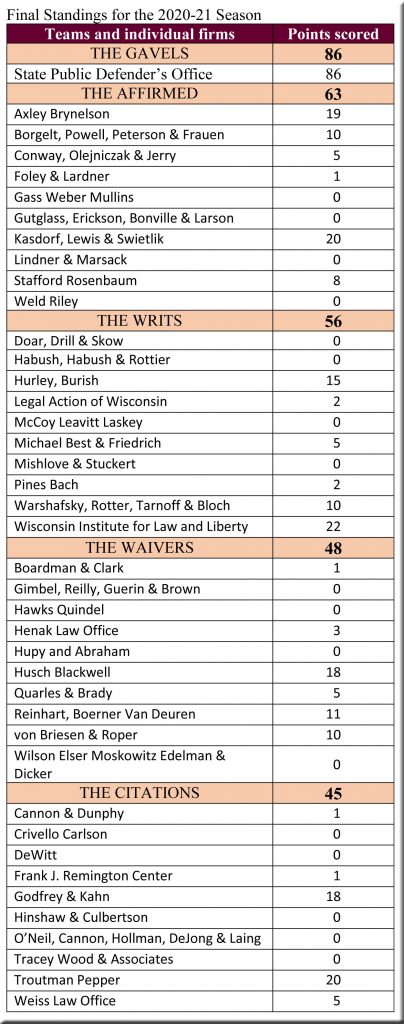These tables are derived from information contained in 230 Wisconsin Supreme Court decisions that were turned up in a Nexis Uni search for decisions filed between September 1, 1952, and August 31, 1953. The total of 230 decisions does not include various orders pertaining to disciplinary matters involving lawyers nor to petitions, motions, applications, and the like (generally disposed of without oral argument and in short per curiam decisions).
After deciding Plainse v. Engle, the justices responded to a motion for reconsideration by modifying their mandate slightly, and there was a similar outcome to a motion for reconsideration in Wannmacher v. Baldauf Corporation. I have counted each of these cases only once, though one could argue that they should be counted twice.
I have also omitted Wisconsin Electric Power Co. v. Milwaukee, a deadlocked (3-3) per curiam decision.
When two (or more) cases were, in effect, consolidated—that is, when one was said to be ruled by the decision in the other—the cases are counted as only one. This occurred with State ex rel. Kojis v. Barczak (264 Wis. 136) and State ex rel. Kojis v. Barczak (264 Wis. 142)—and also in State v. Friedrich & Loots Company, State v. Shilts, and State v. Tomlin, all said to be ruled by State v. Stang Tank Line.
The tables are available as a complete set and by individual topic in the subsets listed below.
Four-to-Three Decisions
Decisions Arranged by Vote Split
Frequency of Justices in the Majority
Distribution of Opinion Authorship
Frequency of Agreement Between Pairs of Justices
Average Time Between Oral Argument and Opinions Authored by Each Justice
